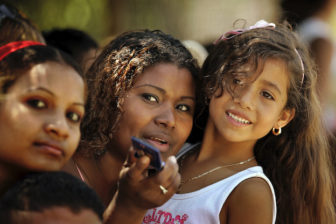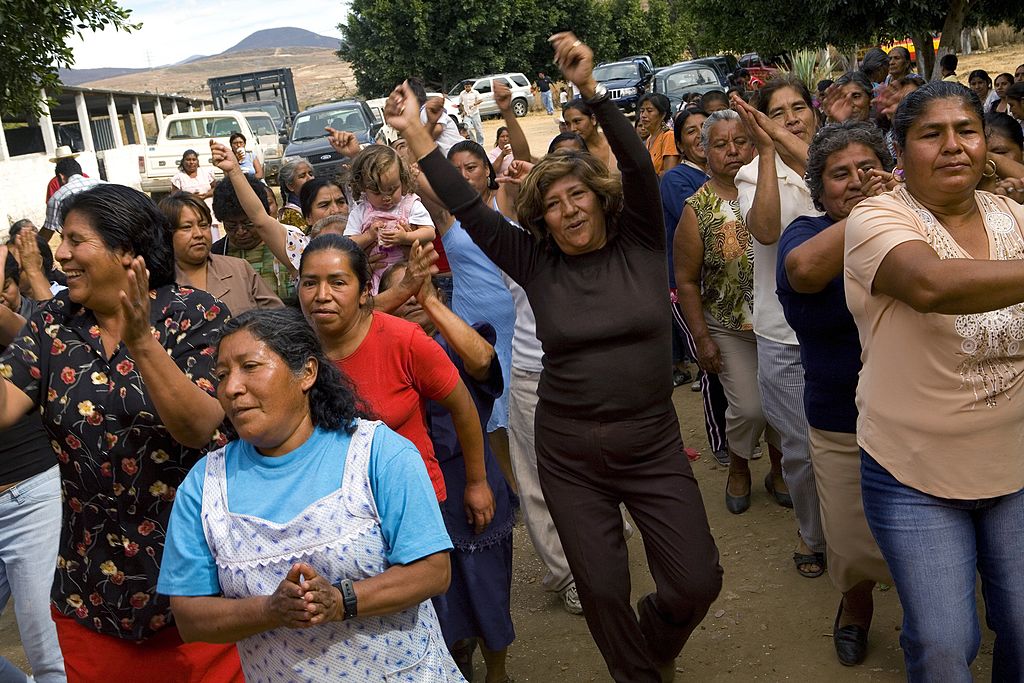Descarga el PDF del Índice en español.
In a series of video interviews below, AS/COA President and CEO Susan Segal, AQ Editor-in-Chief Christopher Sabatini and AQ Editor Alana Tummino discuss the results of AQ‘s 2013 Social Inclusion Index, which draws from household survey data, public opinion surveys, statistics on economic growth and poverty, and surveys of political, civil and human rights, to evaluate and rank 16 countries in the Americas on 21different social inclusion variables.
This year’s Index is updated with all-new data and looks at four new countries (Costa Rica, El Salvador, Honduras, and Panama) and three new variables: LGBT rights, women’s rights and financial inclusion by gender. The 2013 Index appears in the Summer 2013 issue of AQ, launched on July 31. Watch the videos below to learn more about changes in last year’s rankings, the impact of the new variables and the ways that countries across the hemisphere can promote greater social inclusion.
Watch the videos:
Christopher Sabatini: Defining Social Inclusion
Christopher Sabatini: How Countries Stacked Up
Christopher Sabatini: How Can Countries Improve?
Defining Social Inclusion
What does social inclusion actually mean? “We often include an implicit set of assumptions about what social inclusion is…so what we really wanted to do first is define it,” says AQ Editor-in-Chief Christopher Sabatini. As a result, AQ‘s Index measures inclusion with a wide variety of indicators, including economic development, measures of public opinion, and LGBT rights, women’s rights and financial inclusion. As Sabatini points out, “the poor are not homogenous,” so responses to questions about civil society participation, financial inclusion, income, personal empowerment, government responsiveness, and access to housing and former employment were disaggregated by race and gender.
As a result of the new variables, Chile—last year’s top-ranking country in social inclusion—dropped to second place due to its mediocre score in LGBT rights and women’s rights. “There’s a certain coherence and organic nature to these variables,” Sabatini says. “What we’re trying to do is get people to look in there, try to answer some of the questions about what we’ve found and really inform the public debate.”
How Countries Stacked Up
Uruguay, Chile and the United States took the top-three spots in this year’s social inclusion rankings, with Costa Rica and Brazil trailing in fourth and fifth place, respectively. Guatemala was the least socially inclusive country. While the top-ranking countries may not come as a surprise, why didn’t some of the hemisphere’s economic powerhouses do better? Latin America’s middle class has seen dramatic growth in the last decade, but Sabatini points out that “being middle class in terms of your income means very little. I think we’re seeing the effects of that with protests in Brazil where people may have more money in their pockets, but they actually don’t feel that the system is responding to them.”
Sabatini also says that the citizens in the most inclusive countries—including the U.S. and Chile—are nonetheless reporting a low sense of government responsiveness to their needs. In contrast, citizens of Bolivia and Ecuador (who rank lower in the Index) reported very high levels of personal empowerment and government responsiveness. “Clearly, the very active changing of the old party system has meant that people are feeling more included,” Sabatini says.
How can Countries Improve?
What can countries do to address social exclusion? Sabatini proposes four ways to promote greater inclusiveness: 1) increasing social spending (for example, protest-fraught Peru scored high on economic growth but low on the percentage of GDP spent on social programs); 2) ensuring financial access across race, ethnicity and gender; 3) addressing women’s rights, beginning with providing data on physical and sexual violence against women; and 4) ensuring access to formal jobs across race, ethnicity and gender.
Women’s Rights
The 2013 Social Inclusion Index used five criteria to score women’s rights on a scale of 1 to 26: 1) maternal mortality rates; 2) degrees of legal permissability of abortion; 3) the prevalence of women in politics; 4) presence of laws on domestic and sexual violence against women and sexual harassment; and 5) the availability of accurate information on violence against women. “If governments can’t respond and keep data and hold police forces responsible for making sure that women and children are protected, then you won’t have the right kind of social and economic development,” says AS/COA President and CEO Susan Segal. “I would hope that when people break down the variables of this Index, that they will use this as a way to change what’s going on in some of the countries that ranked at the bottom.”
LGBT Rights
AQ used Javier Corrales’ Gay Friendliness Index to score respect for LGBT rights on a scale of 0-7 using seven criteria: 1) recognition of same sex relationships; 2) permissability of same-sex sexual activity; 3) permissability of same-sex adoption; 4) ability of gays and lesbians to serve openly in the military; 5) permissability of same-sex marriage; 6) presence of anti-discrimination laws that protect gays and lesbians; and 7) presence of laws that respect gender identity.
“Because this is an Index that measures social inclusion, you have to go beyond traditional economic measurements like GDP growth or percentage of the population that lives above $4 a day,” says AQ Editor Alana Tummino, adding that 2013 has been “a huge year” for LGBT rights—particularly in Uruguay, Brazil and the United States. “A citizen is not going to feel included in their country’s development if the laws don’t protect their choices and their rights.”
Learn more about the AS/COA Women’s Hemispheric Network.
Video Production & Editing: Luisa Leme
Graphics: Donald Partyka, Luisa Leme, Maha Masud
Music: Moby, Accident








